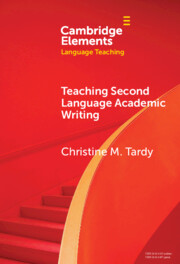Element contents
Teaching Second Language Academic Writing
Published online by Cambridge University Press: 20 February 2025
Summary
- Type
- Element
- Information
- Series: Elements in Language TeachingOnline ISBN: 9781009638326Publisher: Cambridge University PressPrint publication: 20 February 2025
References
- 1
- Cited by

